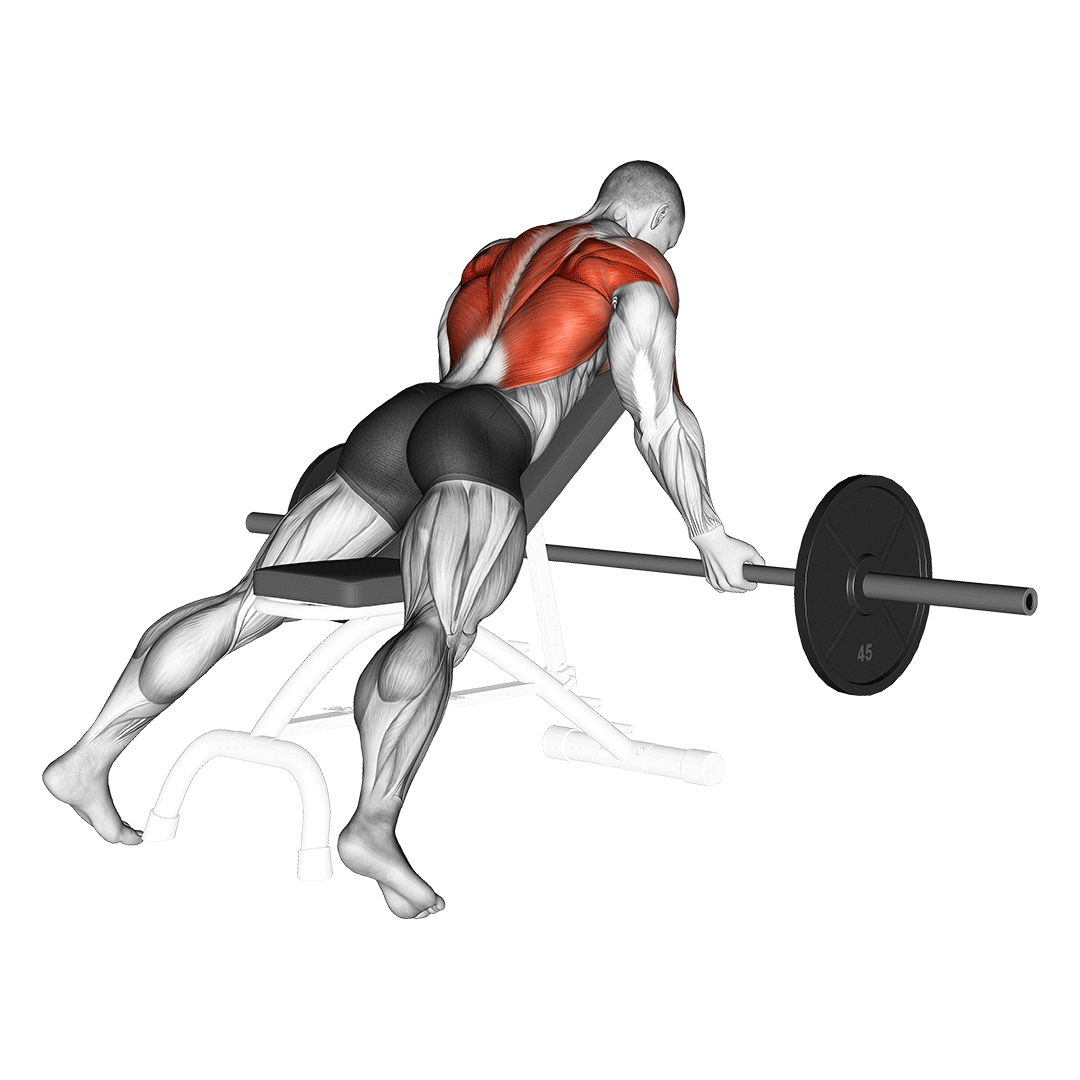Building upper back strength is essential for aesthetics, posture, and functional fitness. Barbell Reverse Grip Rows effectively target the often-neglected muscles in your upper back, contributing not only to muscle growth but also to enhanced shoulder stability, injury prevention, and improved performance in daily activities. A strong upper back supports your spine and plays a key role in tasks like lifting, sports, and maintaining good posture, ultimately reducing back pain over time.
When executing Barbell Reverse Grip Rows, you primarily engage the latissimus dorsi, rhomboids, and trapezius muscles. Incorporate this exercise into your routine 1-3 times a week for optimum results while ensuring a balanced schedule that allows for recovery. Focus on proper form to avoid injury; common mistakes include rounding the shoulders and using excessive weight. Utilize a barbell and an adjustable incline bench, and if you’re new to the exercise, start with lighter weights or resistance bands for mastery. Remember, every rep contributes to enhanced upper body strength and overall functionality. Commit to your fitness goals and let’s get started!
How to Do a Barbell Reverse Grip Incline Bench Row

Begin by setting an incline bench at a 30-45 degree angle. Lie face down on the bench, with your feet flat on the ground, and grasp a barbell with an underhand grip (palms facing you) shoulder-width apart.
- Engage your core and keep your chest against the bench.
- Start with the barbell hanging straight down, arms fully extended.
- Pull the barbell towards your lower ribcage, squeezing your shoulder blades together at the top of the movement.
- Control the weight as you lower it back to the starting position, fully extending your arms.
Inhale as you lower the barbell and exhale as you pull it towards you.
Level Up Your Fitness: Join our 💪 strong community in Fitness Volt Newsletter. Get daily inspiration, expert-backed workouts, nutrition tips, the latest in strength sports, and the support you need to reach your goals. Subscribe for free!
Level Up Your Fitness: Join our 💪 strong community in Fitness Volt Newsletter. Get daily inspiration, expert-backed workouts, nutrition tips, the latest in strength sports, and the support you need to reach your goals. Subscribe for free!
Common Mistakes
- Incorrect Grip Width: Using a grip that is too wide or too narrow can limit your range of motion and effectiveness. Ensure your hands are shoulder-width apart to maximize engagement of the upper back muscles.
- Rounding Back Posture: Allowing your back to round while performing the row can lead to injury and reduced strength gains. Maintain a neutral spine by engaging your core and keeping your chest against the bench.
- Lowering the Barbell too Quickly: Rapidly lowering the barbell can lead to loss of control and impact muscle engagement. Focus on slow and controlled movements to enhance muscle growth and strength.
- Lifting with the Arms Instead of the Back: Relying predominantly on the arms to pull the weight can diminish the effectiveness of the exercise. Concentrate on utilizing your back muscles by initiating the pull with your shoulder blades.
- Failing to Fully Extend Arms: Not fully extending your arms at the bottom of the movement limits muscle activation. Always return the barbell to a fully extended position before starting the next repetition.
Benefits
- Strengthens Upper Back: This exercise targets key muscles in the upper back, including the rhomboids and traps, promoting a strong and stable posture.
- Improves Grip Strength: Using a reverse grip engages the forearm muscles, enhancing grip strength critical for various compound lifts.
- Enhances Spinal Stability: The bent-over position helps strengthen the muscles surrounding the spine, contributing to better overall stability during physical activities.
- Promotes Muscle Hypertrophy: By effectively targeting back muscles through resistance, this exercise supports muscle growth and aesthetics.
- Reduces Risk of Injury: Stronger upper back muscles can alleviate strain on the lower back during daily activities and other lifts, reducing the risk of injury.
Exercise Variations
Alternative Exercises
Safety Precautions
When performing the Barbell Reverse Grip Incline Bench Row, it’s crucial to prioritize safety to prevent injury and ensure effective workouts. First, always start with a weight that you can comfortably control. Overloading the barbell can compromise your form, leading to strain in your back and shoulders. Gradually increase the weight as you become more proficient in the exercise to build strength without risking injury.
Ensure that your incline bench is stable and securely positioned. This provides a reliable base that helps maintain proper body alignment throughout the movement. Also, pay attention to your body and its signals; if you experience any discomfort or pain during the exercise, stop immediately and reassess your form and weight. Never push through pain, as this can lead to more serious injuries.
Lastly, maintain a neutral spine and engage your core throughout the exercise. This helps protect your lower back from undue stress. Keep your head aligned with your spine and avoid looking up or down excessively. Instead, focus your gaze down towards the floor. This way, you can concentrate on the movements without compromising your posture or risking injury.








